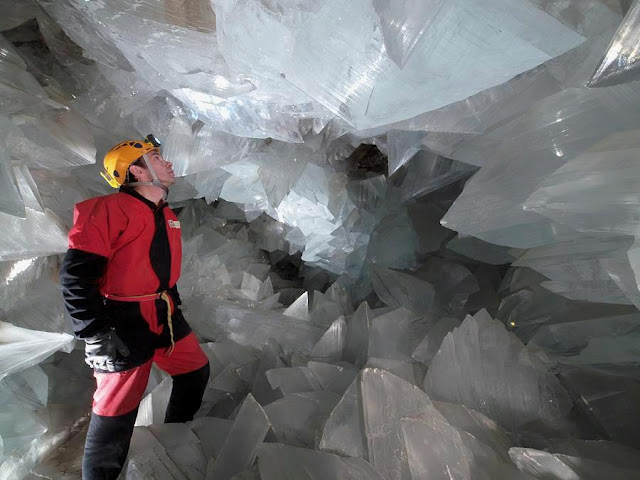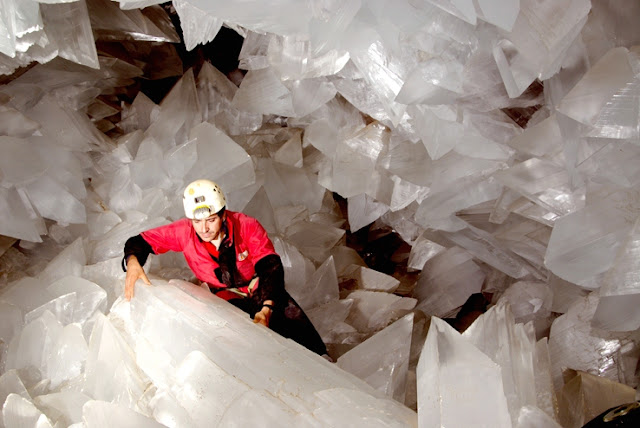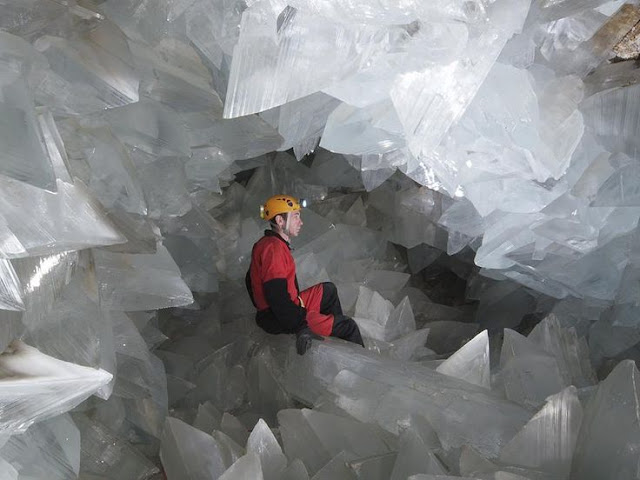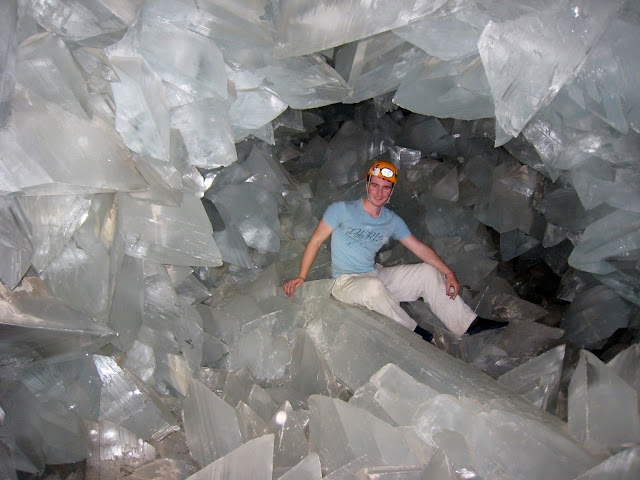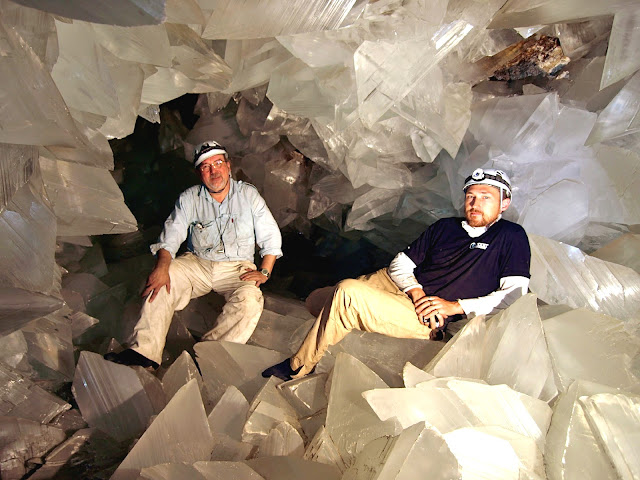Enormous crystal Geode discovered in Spain
A gigantic cave of crystals has been discovered in an old silver mine in Spain.
It occupies a space of 10.7 m³ (8 m long by 1.8 m wide by a 1.7 m average high) and is located at a depth of 50 m in the Pilar de Jaravía lead mine, in the Sierra del Aguilón, in the municipality of Pulpí, coinciding with the sea level, 3 km from the coast.
The geode, which is eight metres (26ft) long and crammed full of gypsum prisms, has been put under police guard to prevent souvenir hunters from raiding the extraordinary natural phenomenon.
The geologist who announced the find, Javier Garcia-Guinea, wants to turn the site into a tourist attraction.
He said that up to 10 people could sit inside the geode – an object normally small enough to hold in your hands.
“Bending your body between the huge crystals is an incredible sensation,” he said. “When I was young I dreamt of flying, but never to go into a geode internally covered with transparent crystals.”
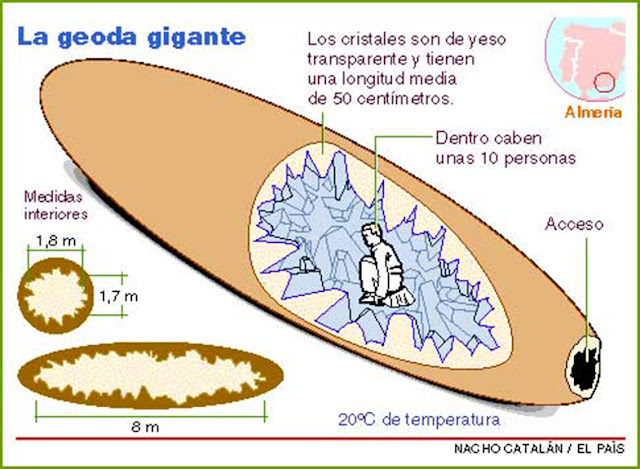 |
| Schematic sketch of the geode and its dimensions. Credit : A. Rivera |
Rumours of the existence of a giant gypsum geode had been circulating among mineral collectors since December.
But it was only on May that Javier Garcia-Guinea, from the Spanish Council for Scientific Research (CSIC) in Madrid, finally managed to track down the cave.
“The crystals are absolutely transparent and perfect,” he said. The geologist has searched the international literature and can find no other object to compare in size.
The geode – essentially a rock cavity which has become lined with crystalline deposits – is eight meters in length, 1.8 metres wide and 1.7 metres high (26 feet by six by six).
The crystals of gypsum – hydrous calcium sulphate – are about half a metre in length.
The giant geode may have formed at the same time as a geological event called the Messinian salinity crisis.
At this time, about six million years ago, the Mediterranean Sea evaporated, depositing thick layers of salts. The same, salt-saturated fluids could have filled up the Spanish geode, which lies near the coast.
The drying out of the Mediterranean was probably caused by a restriction in the straits of Gibraltar, the sea’s only connection with rest of the Earth’s oceans.
All photos courtesy of Javier Truebamsf
